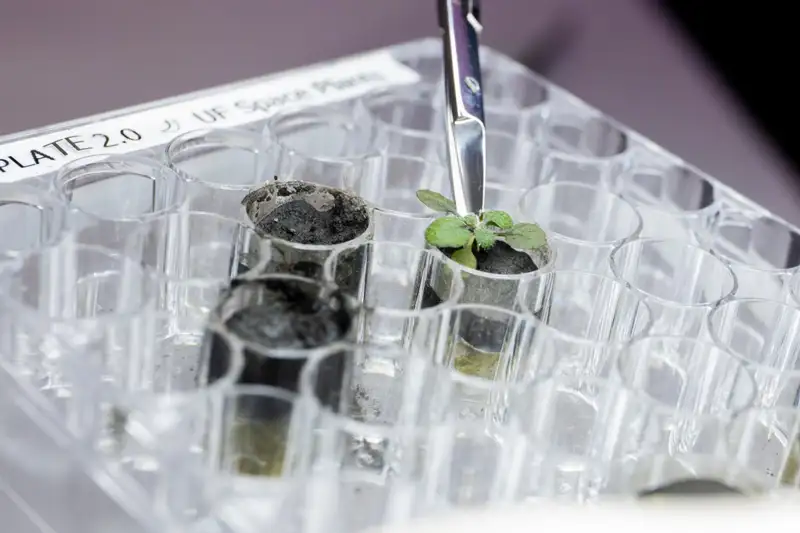If humans ever set up a base on the Moon, they are going to have to feed themselves. This is tricky – do you take it all with you or try and grow things when you get there?
Most people have seen The Martian and might assume that growing food in moondust is just a case of adding some organic matter and away you go.
But no.
As this talk describes (disclosure: Boswell Technologies is one of my clients), the dust on the moon is called regolith and it’s pretty unforgiving stuff. It’s constantly bombarded by solar radiation. It’s very sharp and angular because it’s full of glass. It’s very low in the nutrients that plants need, such as carbon, oxygen, nitrogen and phosphorous. But that’s not stopping people trying.
This week, a group from the University of Florida reported growing Arabidopsis thaliana seeds in regolith that was brought back from the Apollo 11, 12 and 17 missions.
They only had 12 grams to play with, but they found that nearly all of the seeds germinated.

However, compared with even the harshest soils on earth, the lunar soil plants grew more slowly and reached smaller sizes than the controls. The seedlings expressed genes that help cope with environmental stress because conditions were so tough.
So while this is a proof of concept, it illustrates some of the difficulties lunar colonies would face in feeding themselves. It might be possible to choose younger parts of the Moon that haven’t been battered quite as much as the Apollo samples.
Sources: Plants grown in Apollo lunar regolith present stress-associated transcriptomes that inform prospects for lunar exploration and The First Plants Have Been Grown In Lunar Soil – But It’s Not Easy
I talked about this with Danny Hoyland on West Bremer Radio on 7 May 2022. Listen live each week: Saturday 7.40 am, West Bremer Radio.

